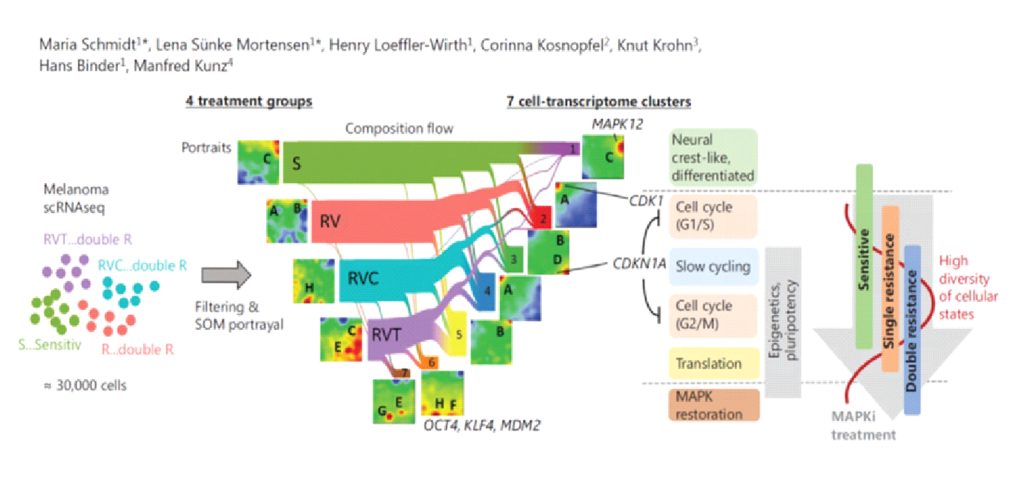SINGLE-CELL TRAJECTORIES OF MELANOMA CELL RESISTANCE TO TARGETED TREATMENT

Abstract
Objective: Cellular heterogeneity is regarded as a major factor affecting treatment response and resistance in malignant melanoma. Recent developments in single-cell sequencing technology have provided deeper insights into these mechanisms.
Methods: Here, we analyzed a BRAFV600E-mutant melanoma cell line by single-cell RNA-seq under various conditions: cells sensitive to BRAF inhibition with BRAF inhibitor vemurafenib and cells resistant to BRAF inhibition with vemurafenib alone or vemurafenib in combination with the MEK1/2 inhibitors cobimetinib or trametinib. Dimensionality reduction by t-distributed stochastic neighbor embedding and self-organizing maps identified distinct trajectories of resistance development clearly separating the 4 treatment conditions in cell and gene state space.
Results: Trajectories associated with resistance to single-agent treatment involved cell cycle, extracellular matrix, and de-differentiation programs. In contrast, shifts detected in double-resistant cells primarily affected translation and mitogen-activated protein kinase pathway reactivation, with a small subpopulation showing markers of pluripotency. These findings were validated in pseudotime analyses and RNA velocity measurements.
Conclusions: The single-cell transcriptomic analyses reported here employed a spectrum of bioinformatics methods to identify mechanisms of melanoma resistance to single- and double-agent treatments. This study deepens our understanding of treatment-induced cellular reprogramming and plasticity in melanoma cells and identifies targets of potential relevance to the management of treatment resistance.
